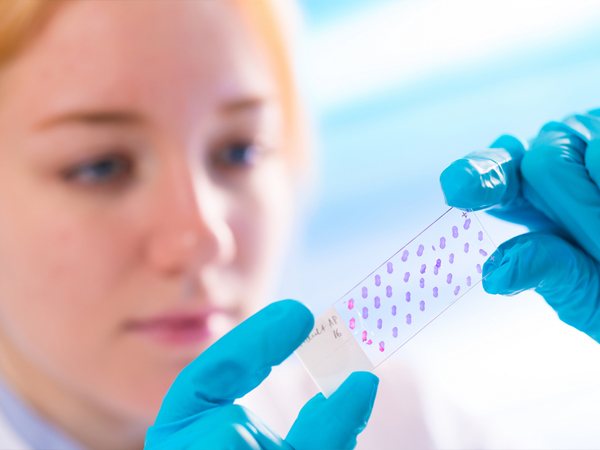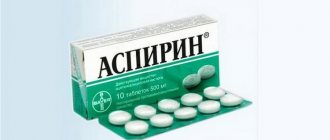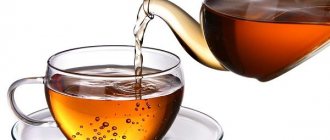Mother's milk is recognized as a unique product with an ideal balance of nutrients. Receiving it regularly to your child ensures strong immunity and reduces allergic reactions, which is not uncommon for artificial formulas. But even such a product can sometimes be harmful. Let's consider a study such as breast milk analysis, its types, and methods.
Benefits of Breastfeeding
- The peculiarity of breast milk is that, when it enters the baby’s body, it provides him with all the necessary components that contribute to the full growth and development of the baby.
- In addition, biologically active substances that perform a protective function are transmitted from mother to child. Breast milk contains components that protect the intestines from inflammation and reduce the likelihood of bacterial development.
- And the longer the mother breastfeeds the baby, the more protected he will be from the influence of negative factors. Doctors recommend stopping breastfeeding if a woman has infectious mastitis. When the disease proceeds without the formation of pus, breastfeeding can be continued. To detect whether there are infections in the milk, a special analysis is carried out. It can be taken at the Invitro clinic or at another institution recommended by the attending physician.
Bad result: what to do
Of course, as in any other case, poor test results are a reason to immediately consult a doctor.
Only he will be able to prescribe the correct treatment and tell you whether you need to stop breastfeeding your baby. If the analysis results reveal a small number of staphylococcus microbes, there is no need to sound the alarm. Normally, these representatives of this microflora can be found in a completely healthy body, and the antibodies produced by the mother’s body will cope with the disease and protect the baby from it. The most common cause of poor milk analysis is Staphylococcus aureus. It is characterized by the following symptoms:
- redness of the chest, accompanied by pain, often throbbing;
- heat;
- pain in the chest, in particular in the nipples;
- unpleasant discharge from them.
If the baby’s immunity is high, these bacteria may simply not take root in his intestines. But if a child is fed infected milk for a long time, his immunity may be weakened and his natural defenses will fall. To treat staphylococcus, doctors often prescribe not antibiotics, but bacteriophages or herbal antiseptics.
These drugs do not affect the baby, which means there is no reason to interrupt breastfeeding. But only a doctor should prescribe adequate treatment. Determining the causes of a disease using a laboratory method is a very convenient and correct assistant for treating physicians. Therefore, if a young nursing mother experiences high fever, pain during feeding, as well as inflammatory processes, it is necessary to call a doctor and prevent the development of a dangerous disease as early as possible.
How to prepare for the test?
Before donating breast milk for analysis, you need to be well prepared. To achieve this, a number of hygiene procedures are carried out:
- Hands and chest are thoroughly washed with laundry soap. Then the woman wipes them with a soft, washed towel or alcohol wipes.
- The nipple is treated with a solution based on alcohol and water or hydrogen peroxide.
- You must purchase two sterile test tubes from the pharmacy in advance. At the Invitro clinic they are given directly to the laboratory. Milk from each breast is expressed into a separate tube. Please note that the first portion of milk is not suitable for analysis, so it can be expressed into another container.
- The material must be collected no earlier than 2 hours before the breast milk analysis is carried out at the Invitro private clinic. Otherwise, the results of the study may not be entirely accurate.
- Jars of milk are labeled with the numbers 1 and 2 so that you know which material is from which breast.
At the Invitro clinic, the results of the examination will be known in exactly a week. It will not be possible to find out the result faster, since bacteria need time to reproduce. Ensuring complete sterility of test tubes at home is not easy. To do this, they are washed with a soda solution and boiled for 40 minutes. If you take the material for analysis directly in the hospital, such manipulations are not required.
The medical department performs a comprehensive analysis of breast milk. Not only the presence of bacteria is determined, but also their quantity, as well as resistance to various medications. Due to this, after the analysis, an Invitro employee will be able to select the most suitable method of treating the disease.
Breast milk analysis: when is it necessary?
It was previously believed that breast milk was completely sterile, but numerous studies have proven that this is not entirely true. Various microorganisms may still be present in milk. These are mainly representatives of opportunistic microflora, which most often exist quietly on the skin, mucous membranes, and in the intestines and do not cause any harm. However, under certain conditions (decreased immunity, chronic diseases, general weakening of the body after an infectious disease, intestinal dysbiosis) they begin to multiply rapidly, causing various diseases. The main bacteria that can live in breast milk are: staphylococci (epidermal and aureus), enterobacteria, Klebsiella, and Candida fungi. The most dangerous of this company is considered Staphylococcus aureus. It is he who, having penetrated the mammary gland, can cause purulent mastitis in a nursing mother. And once in the baby’s body along with breast milk, staphylococcus can cause diseases such as:
- enterocolitis (frequent, loose, watery stools, abdominal pain, fever, frequent regurgitation, vomiting);
- purulent inflammation on the skin;
- phenomena of intestinal dysbiosis (frequent stools, excessive gas formation, accompanied by bloating and the release of a large amount of gas during bowel movements, frequent regurgitation, the appearance of undigested lumps in the stool, change in the color of the stool - yellow-green, the color of swamp mud). Staphylococcus aureus is protected on the outside by a capsule, which helps it penetrate organs and tissues without being destroyed. After the invasion, it begins to release toxic substances that have a destructive effect on the structure of cells. This type of staphylococcus is very resistant to various external factors, and it can be very difficult to “expel” it from the body. Other microorganisms that settle in breast milk can also cause a lot of trouble.
- Fungi of the genus Candida, hemolyzing Escherichia coli and Klebsiella, which penetrate into the baby through breast milk, are capable of fermenting glucose, sucrose and lactose, thereby forming a large amount of gas. This, in turn, causes pain, bloating and diarrhea in the child.

How do microbes get into milk?
Microorganisms enter breast milk mainly through the skin. This can happen if the baby is incorrectly applied to the breast, the breast is incorrectly removed from his mouth, or mistakes are made when caring for the mammary glands. In such cases, microtraumas and cracks in the nipples may appear, which are the entrance gates for infection to enter the mammary glands and, accordingly, into breast milk. Who “lives” in milk? You can find out which microbes live in breast milk and in what quantities by doing a special study, the so-called milk culture .
Analysis of breast milk allows you to detect various pathogens in it, determine their quantity and, if necessary, determine sensitivity to antibacterial drugs. All breastfeeding women do not necessarily have to have their milk tested to find out if it is dangerous for the baby. Such a study should be carried out only in cases where there is a suspicion of infectious diseases in the baby or inflammatory diseases of the mammary gland in the mother. In what cases should milk be tested? The indications will be as follows. From the child's side:
- recurring purulent-inflammatory skin diseases;
- dysbacteriosis;
- prolonged diarrhea (frequent loose stools) with greens and mucus.
From mom's side:
- signs of mastitis (inflammation of the mammary gland) - chest pain, increased body temperature, redness of the skin of the mammary gland, purulent discharge from it.
How to collect milk for analysis?
When collecting breast milk for analysis, it is important to understand that you must try to eliminate the possibility of bacteria from getting from the skin into the milk. Otherwise, the research result may be unreliable. There are certain rules for collecting breast milk for culture.
- First of all, you need to prepare a container for expressed milk. These can be sterile disposable plastic cups (you can buy them at the pharmacy) or clean glass jars, which must first be boiled with a lid for 15–20 minutes.
- There should be two containers for expressed milk, since milk for analysis from each mammary gland is collected separately. The containers should be marked from which breast the milk was taken.
- Before pumping, wash your hands and breasts with warm water and soap.
- The first 5–10 ml of expressed milk is not suitable for testing and should be discarded. After this, the required amount of breast milk (5-10 ml from each mammary gland will be required for analysis) must be expressed into prepared sterile containers and tightly closed with lids.
In the laboratory, milk is sown on a special nutrient medium. After about 5–7 days, colonies of various microbes grow on it. Next, they determine which group of pathogens these microorganisms belong to and count their number.
Should you breastfeed if you have mastitis?
If microbes are present in breast milk, the nursing mother should consult a doctor. Only he can decide whether treatment should be carried out or not. The World Health Organization (WHO) believes that the detection of bacteria in breast milk is not a reason to stop breastfeeding. The fact is that all pathogenic microorganisms, penetrating the body of a nursing mother, stimulate the production of special protective proteins - antibodies, which reach the baby during feeding and protect him. That is, if some microorganisms are detected in the milk, but there are no signs of disease (purulent mastitis), breastfeeding will be safe, since along with the milk the child receives protection from infections.

If staphylococcus is detected in breast milk, treatment with antibacterial drugs is prescribed only in the case of purulent mastitis in the mother, when she has signs of infection. At the same time, doctors recommend temporarily (during the mother’s treatment with antibiotics) not to put the baby on the sore breast, regularly express milk from it, and continue to feed him from the healthy mammary gland.
In cases where symptoms of staphylococcal infection are detected in both mother and child, simultaneous treatment is carried out for mother and baby. However, in a child this disease can manifest itself in different ways:
- inflammation of the mucous membrane of the eyes (the eyelids swell and the eyes fester);
- inflammation of the area around the navel (the skin in this area swells, turns red and pus is released from the umbilical wound);
- purulent-inflammatory skin lesions (vesicles of various sizes appear on the baby’s skin, filled with purulent contents, and the skin around them turns red);
- inflammation of the small and large intestines (in this case, profuse watery stools appear up to 8-10 times a day, maybe mixed with mucus and blood, vomiting, abdominal pain).
To confirm the diagnosis and determine the causative agent, the doctor may prescribe bacterial culture of discharge from the source of inflammation (eyes, umbilical wound, contents of blisters on the skin). And if the baby’s intestines are disrupted, a stool microflora test is prescribed.
How to keep milk “pure”
In order for the milk to remain “pure” and there is no need to interrupt breastfeeding, depriving the baby of the best food for him, a nursing mother can be advised to follow a diet with a limit on sweet, flour and butter foods, since their abundance creates a favorable environment for the reproduction and growth of microbes. It is also important to prevent nipple cracks from developing. And to do this, you need to properly attach the baby to the breast (in this case, the baby grasps most of the areola, and not just the nipple, his lower lip is turned outward, and his nose touches the breast) and follow several rules when caring for the mammary glands (wash your breasts no more than 1– 2 times a day; arrange air baths for the nipples after feeding and between them; lubricate the nipples after feeding with drops of “hind” milk released at the end of feeding, as it has protective and healing properties and protects the nipple from dryness; do not use for treating the nipple and areolas, various disinfectants - brilliant green, alcohol, etc., as this helps dry out the skin of the nipple and areola with the subsequent appearance of cracks). If cracks do appear, then it is imperative to treat them in a timely manner in order to prevent infection and the development of mastitis.

Do I need treatment if nothing hurts?
When staphylococcus is present in breast milk, but the nursing woman has no signs of infection, breastfeeding is not stopped, but, as a rule, the mother is prescribed treatment (orally and locally) with drugs from the group of antiseptics, which are not contraindicated during breastfeeding, and the child is given a doctor will prescribe probiotics (bifidobacteria and lactobacilli) to prevent dysbiosis.
Many women think that if there are no signs of the disease, then there is no need for treatment. However, this opinion cannot be considered correct. The problem is that in such a situation the mother’s condition will not worsen, but the baby can be harmed. If a child is fed infected milk for a long time, the composition of bacteria in his intestines may be disrupted and the body’s defenses will fail. Therefore, the mother must be treated without interrupting breastfeeding.
Evaluating the result of breast milk analysis
What can you see on the analysis form that comes from the laboratory?
- Option 1 . When inoculating milk, no growth of microflora is observed, i.e. milk is sterile. It is worth noting that such an analysis result is very rare.
- Option 2 . When inoculating milk, the number of non-pathogenic microorganisms (staphylococcus epidermidis, enterococci) increased slightly. These bacteria are representatives of the normal microflora of the mucous membranes and skin and do not pose a danger.
- Option 3 . When inoculating milk, pathogenic microorganisms were found (Staphylococcus aureus, Klebsiella, hemolyzing Escherichia coli, Candida fungi, Pseudomonas aeruginosa). Their permissible level in breast milk is no more than 250 colonies of bacteria per 1 ml of milk (CFU/ml).
Staphylococcus test
After submitting the material for analysis, specialists begin searching for harmful microorganisms in it. At the same time, a number of studies are being carried out to determine which microbes are present in it and whether they exist at all. Invitro employees check milk for the presence of the following bacteria: staphylococcus, coli and others.
As a rule, harmful microbes enter milk through microcracks in the nipple. If a woman has large cracks and they cause pain, she should have her breast milk tested for antibodies. Microcracks often do not cause discomfort for a nursing mother, but they appear in almost every woman who puts a baby to her breast.
In general, if the mother’s immunity is not weakened, then staphylococcus does not infect breast milk. But if a woman has suffered an infectious disease, then the problem will most likely appear. It is recommended to carry out treatment and diagnosis at the Invitro clinic, where only qualified employees work.
If Staphylococcus aureus appears in the baby’s body, a number of unpleasant symptoms will arise. In particular, the child’s digestion will be disrupted. He will diarrhea, he will vomit and vomit. The baby will become restless and start crying often. Pimples with pus inside will appear on his skin. Staphylococcal tonsillitis is often observed in children. The child urgently needs to be shown to a pediatrician from the Invitro clinic, otherwise there is a possibility of developing sinusitis or otitis media.
Indications for analysis
Bacteriological examination of breast milk is mandatory in the following cases:
- if a nursing mother has suffered purulent mastitis;
- if in the first two months of life the baby experiences sharply unstable stools (dark green, mixed with mucus and blood), colic, constipation and diarrhea in combination with low weight gain;
- if the child has purulent-inflammatory diseases or sepsis.
Thus, most often it is necessary to take an analysis in case of recurring mastitis in a nursing mother, and in more rare cases - to find the causes of diseases and disturbances in the feeding and digestive processes of the baby.
Treatment
- When a woman experiences pain in the nipple area, she urgently needs to be tested for the sterility of her milk. Such an examination can be carried out at any time without a doctor’s prescription. The doors of the Invitro clinic are open to everyone. You can view the results and prescribe treatment right here. The advantage of the private hospital “Invitro” is obvious: here each patient is treated carefully, delving into the essence of the problem.
- If a woman does not have mastitis, her doctor will prescribe her a course of treatment based on anti-inflammatory drugs. The baby is prescribed lactobacilli to reduce the likelihood of dysbacteriosis. A gastroenterologist prescribes herbal antiseptics to a woman. Antibiotics are used as a last resort. After all, the mother will have to stop breastfeeding, since it is undesirable for antibiotics to enter the child’s body.
- A doctor from the private clinic “Invitro” can recommend drugs to a woman that will not affect lactation in any way. In general, it is not recommended to stop breastfeeding after microbes are detected in milk during a sterility test. After all, it is quite possible to combine treatment and lactation.











